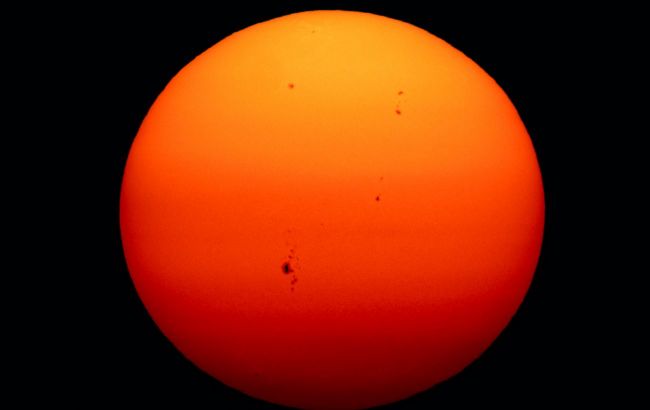Highly active solar flare again directly aimed at Earth: Threat to humanity
 New flares and sunspots could cause magnetic storms (photo: Getty Images)
New flares and sunspots could cause magnetic storms (photo: Getty Images)
The sunspot region that caused the magnificent aurorae in different parts of the Earth in early May has returned and become active. This could trigger a new wave of strong magnetic storms and cause spectacular auroras.
RBC-Ukraine tells about this area of active sunspots and how it will affect the inhabitants of the Earth, regarding Science alert.
Solar flares occur every day
AR 3664, responsible for several class X flares, including the most powerful of the current solar cycle, returned from view to the back of the Sun in mid-May.
As it returned around the Sun's horizon on May 27 under the new name AR 3697, the sunspot erupted in another powerful X-class flare, X 2.8.
Since then, it has spit out five more X-class flares. On May 29, it was an X1.45 flare, on May 31, an X1.1 flare, and on June 1, two flares at once - X1.03 and X1.4.
So far, there have been no reports of an accompanying coronal mass ejection (CME), releasing a huge mass of solar plasma and magnetic field that creates the aurora when it collides with the Earth's magnetosphere.
However, this does not mean that AR 3697 is over. It emits fainter flares every day. On June 2, there were 2 M-class flares - this is the next level after X, 10 times weaker. There were 10 more class C outbreaks, even weaker than class M.
How these outbreaks threaten humanity
Scientists warn that the likelihood of new outbreaks of class X is high, about 30%. Each of these flares can cause geomagnetic activity and auroras.
The sunspot area is now located around the center of the Sun's disk. This means that any eruption will be directed exactly in our direction. This does not guarantee CME activity, but the risks are much higher than average.
We are now approaching the peak of the Sun's 11-year activity cycle, which means that even if AR 3697 gave us the best shot, another sunspot area may emerge that will lead to spectacular light shows in the months ahead.
Forecast for magnetic storms
According to NOAA, TESIS, and international meteorological laboratories around the world, a red-level magnetic storm is expected to hit the earth on June 4 and 5, reaching K-index 5.
Such a storm can cause a deterioration in health, headaches, weakness, drowsiness, and fatigue.
Earlier, we wrote that scientists have given a new schedule of magnetic storms in June and how to protect the body from them.
Read also how magnetic storms affect our brains.
This material is for informational purposes only and should not be used for medical diagnosis or self-treatment. Our goal is to provide readers with accurate information about symptoms, causes, and methods of detecting diseases. RBС-Ukraine is not responsible for any diagnoses that readers may make based on materials from the resource. We do not recommend self-treatment and advise consulting a doctor in case of any health concerns.

